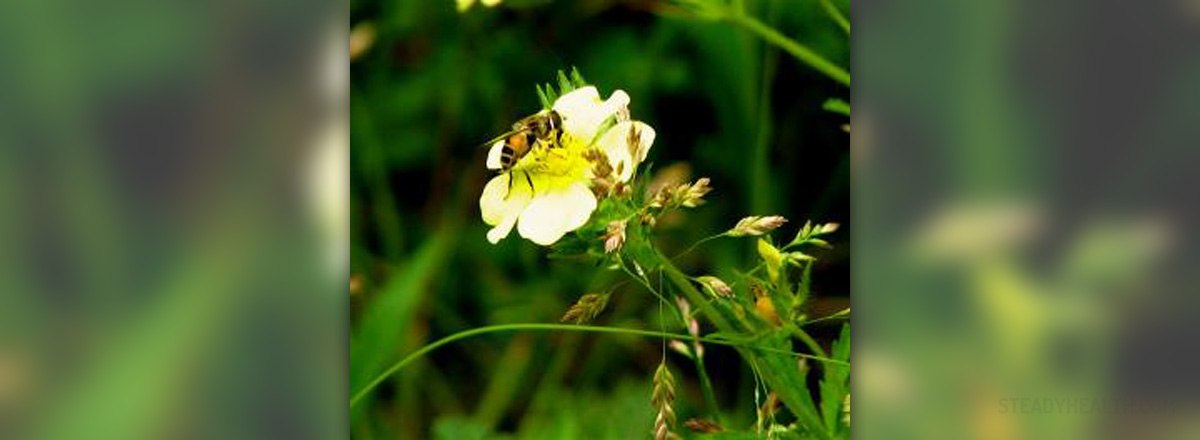
Long tongues enable them to collect nectar even from flowers whose nectar is closed in a tube.

Honey bees have short tongues so they mainly pollinate open flowers, while bumble bees have long tongues. The colors you can see on a bumble bee are orange, yellow, and/or black. Unlike honey bees, bumble bees have only a few stripes of color and usually have part of their body covered in black fur. Honey bee body is covered in many colored stripes, including several grey stripes on the abdomen. Their body is large and broad with a rounded abdomen tip, while honey bees are smaller and thinner. Physical characteristicsīumble bees vary in appearance but generally have round bodies covered in soft hair called pile which is the reason they appear fuzzy.
#Treating a bumble bee sting how to
In order to know how to handle a bees nest, you need to be able to differentiate bumble bees vs honey bees. Usually, the only encounter with bees is noticing them hanging around flowers but they can also decide to make a nest close to your home which can disturb you and your pets. Honey bees and bumble bees look similar and many people tend to mix them up. Bees have different habitat, pollination habits, behaviors, and physical characteristics. Which one is it - bumble bee or honey bee?Įven though insects from the family of bees have many similarities, they also differ in many things. If you just want to find out the answer jump to the section: Through this article you will learn how to recognize bumble bees, what to expect with the bumble bee sting, and how to avoid it. A common thing for all bees is that only female bees (queens and workers) have a stinger, and bumble bees are no different. Not every sting is the same, and bumble bee sting is different than a sting from a honey bee.

Bumble bees are usually peaceful but will attack if provoked.Ī simple answer to ‘do bumble bees sting’ is yes, but there is more to that. However, sometimes our encounters with them are not pleasant. They are some of the best pollinators so it’s essential to protect them. Honey bees are known for honey production, but also for their sting.īumble bees we mostly only know as fuzzy and bigger honey bees, but they are much more than that. However, the most famous bees are surely honey bees and bumble bees.
#Treating a bumble bee sting professional
If possible, cover and protect your head.Ĭontact your pest management professional for advice and assistance to help control bumblebees and other stinging insects on your property.Bees are a big family with over 20,000 species which includes insects such as honey bees, carpenter bees, stingless bees, cuckoo bees, and many more. If bumblebees are stinging you, brush them off your body – don’t crush them – and quickly run away from the area. Instead, move slowly and carefully while retreating from the location where you see bumblebees. Do not wave your arms, swat at the bumblebees or accidentally bump into their nest. Remain calm since bumblebees are not very aggressive.


Sometimes you may not realize you are near a bumblebee nest, so if you discover you are near a nest, it is wise to not do anything that could provoke the bumblebee(s). One of the best ways to avoid bumblebee stings is to stay clear of their nests or the flowers or other plants they visit. Always seek the advice and care of a physician to treat bumblebee stings. While these reactions may show up immediately after the sting, they usually show up a few hours after the sting.Īllergic reactions to the venom or reactions from multiple stings that can result in a general allergic reaction, a systemic allergic reaction that affects the whole body, or an anaphylactic reaction that is a possible life-threatening allergic response. The following reactions may occur:Ī local, non-allergic reaction that produces swelling, itchiness, redness at the sting site and normally lasts for only a few hours to perhaps a few days. Generally, the reaction is dependent on the number of times someone is stung and the victim’s allergic sensitivity to the venom. However, the range or reactions may also include an allergic reaction to the injected venom. In people, the most frequent reaction is short lived, but painful. Sting Appearanceīumblebees inject venom into their target through the stinger. The bumblebee workers and queens are the only members of the nest that will sting. Bumblebees, unlike honeybees, are able to sting multiple times, but they are much less likely to sting than hornets, yellow jackets or honeybees. Like most other stinging wasps and bees, bumblebees sting to defend themselves and their nest. How to Avoid & Prevent Bumblebee Stings Do Bumblebees Sting?


 0 kommentar(er)
0 kommentar(er)
